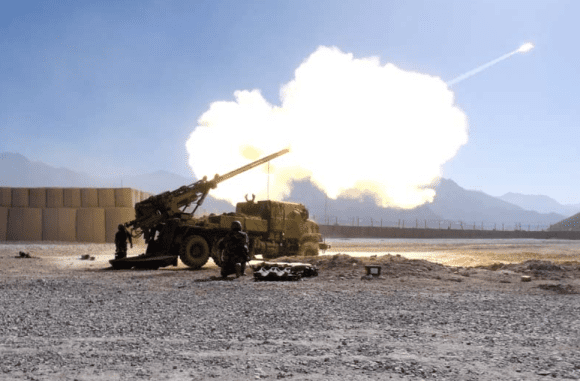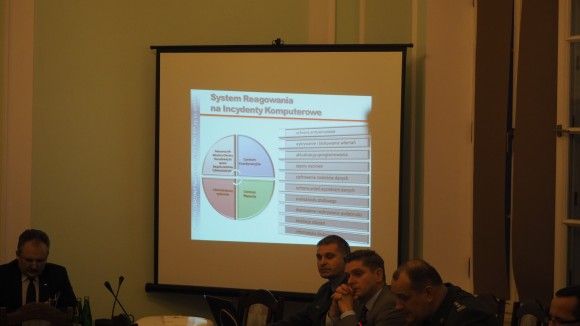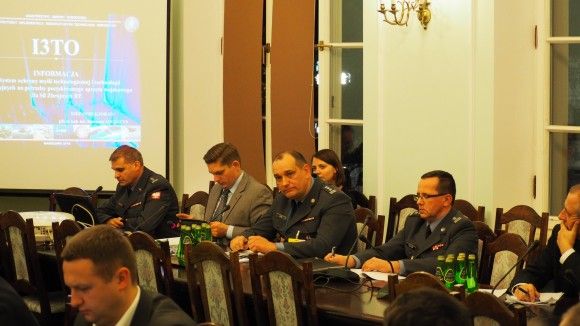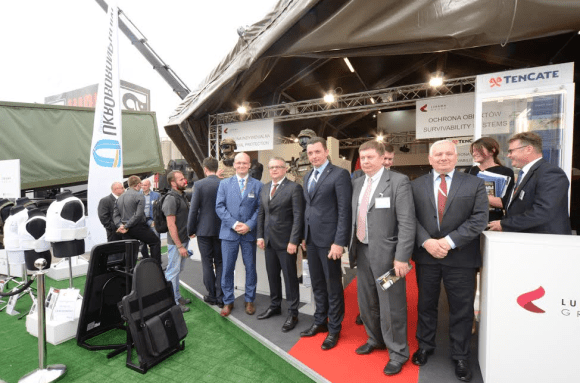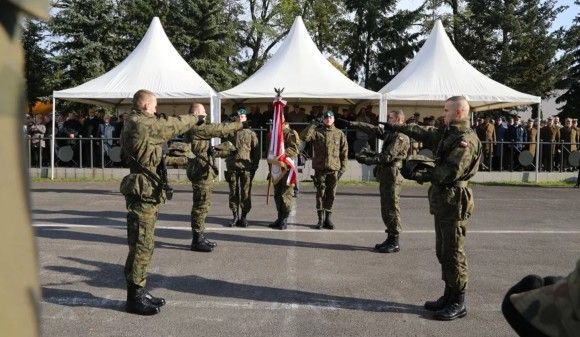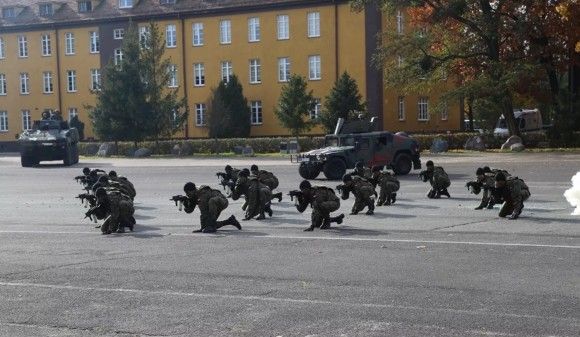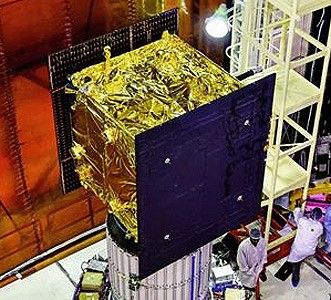Industry
MSPO 2017: “Missile Defence” For the Helicopters
Air Force Institute of Technology is presenting its jet-powered UAVs in Kielce, along with missile countermeasures and a digital training system.
Jet-2 UAV, which is the fastest of the Polish unmanned systems, is the most pronounced element of the Air Force Institute’s of Technology stand at the MSPO Salon. It is a target drone, developed within the framework of a programme financed by the National Centre for Research and Development, powered by two jet engines. The aircraft is capable of flying at speeds above 540 kilometres per hour and at altitudes of 5000 metres. 6000 metres ceiling has been achieved during the test programme. Jet-2 is capable of staying in the air for more than 1 hour.
The take off takes place with the use of a special launcher, the drone may fly autonomously or it may be controlled by an operator. The target drones like the Jet-2 are used for training purposes and to carry out live firing of the anti-aircraft units’ artillery and missile systems. Jet-2 is to become a part of the inventory of the Polish Armed Forces by the end of this year.
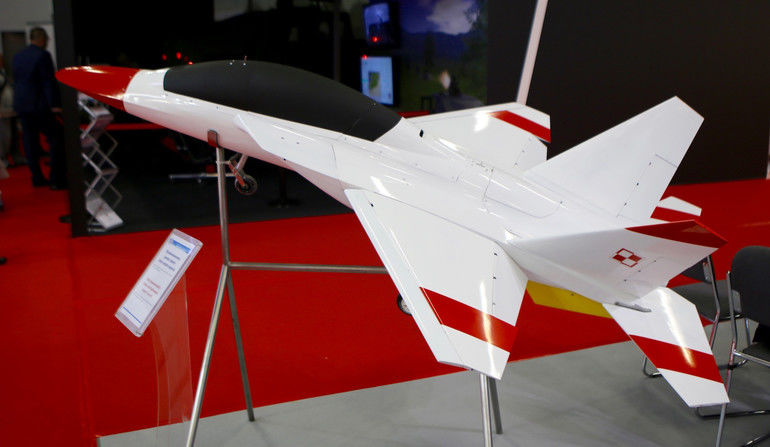
Atrax M VTOL UAV belongs to an entirely different class of unmanned systems. It is available in two variants, with take-off weights of 4.9 or 6.7 kg. It is a carbon-fibre rotorcraft designed in line with the requirements defined by the military. Not only is it a classic reconnaissance drone, capable of flying along a programmed route or being controlled by the operator directly, as thanks to its modular design Atrax M may carry out a wide variety of observation-reconnaissance tasks, but also use payload such as grenades or special ordnance capable of penetrating up to 120 mm of steel armour.
The smaller variant of the system, designed in line with the requirements defined by the Polish GROM SOF Unit is capable of carrying weapons within 4 tube-like points. The heavier unit, the weight of which is close to 7 kilograms, can carry up to 12 charges simultaneously, in two packages holding 6 charges each, mounted on both sides of the body. Atrax M has a flight endurance of 60 minutes, and it may be operated at distances of up to 10 kilometres from the operator. Drone’s top speed is said to reach 80 kilometres per hour.
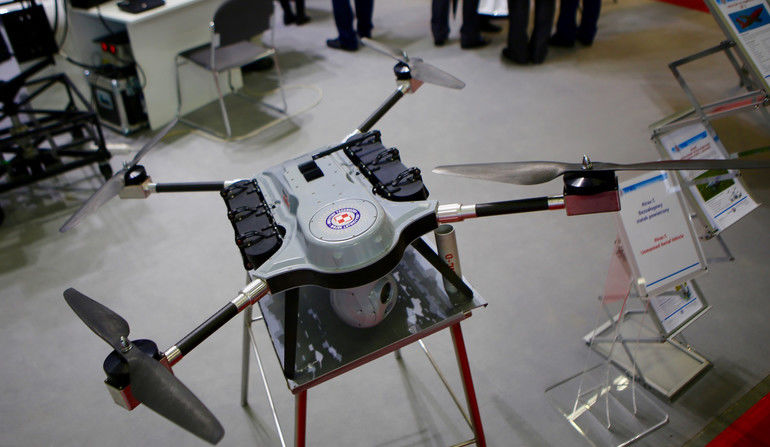
Passive missile defence system for aircraft is another interesting product presented within the booth. The system is compliant with the NATO STANAG 4687 norm. It includes K-811H dispenser boxes and TNZ-811H flare countermeasures. What’s important, the system has been integrated with the ASO 2W beams used in case of the Mi-17, Mi-24 and W-3 Sokół helicopters. In the future it may also be used with the MiG-29 fighter jets.
K-811H flare dispensers are designed to accommodate NATO standard 1x1x8” type TNZ-811H countermeasures, that are twice as heavy as the NT-26 or PPI-26 flares used up until recently in case of the Polish aircraft.
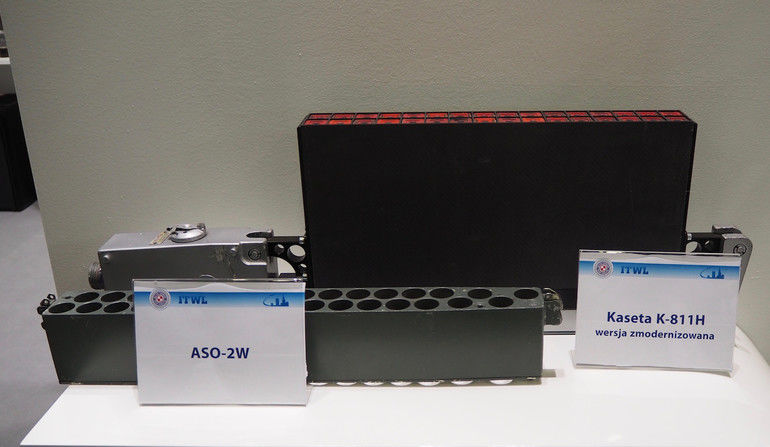
TNZ-811H flares are also burning on the whole of their surface, thus increasing the amount of the emitted radiation five-fold. This is very important, when it comes to interruption of the guided missiles sensors operation. The test programme involved the W-3 Sokół helicopter featuring a special test device based upon a seeker of an IR guided missile. Not only was it proven that the new system is more effective, as new, optimized launching sequences were also created.
Digital systems for maintenance and training support are yet another important element of the ITWL’s offer presented in Kielce. The latest product belonging to the said category is an E-learning system for supporting the aircraft training activities, used to verify the knowledge of the flying and ground crews. The system makes it possible to conduct the training activities remotely, within the area of emergency procedures or new maintenance standards. The open architecture allows for use of a variety of E-learning solutions readily available on the market. Furthermore, it is easy to have new content included within the system.

